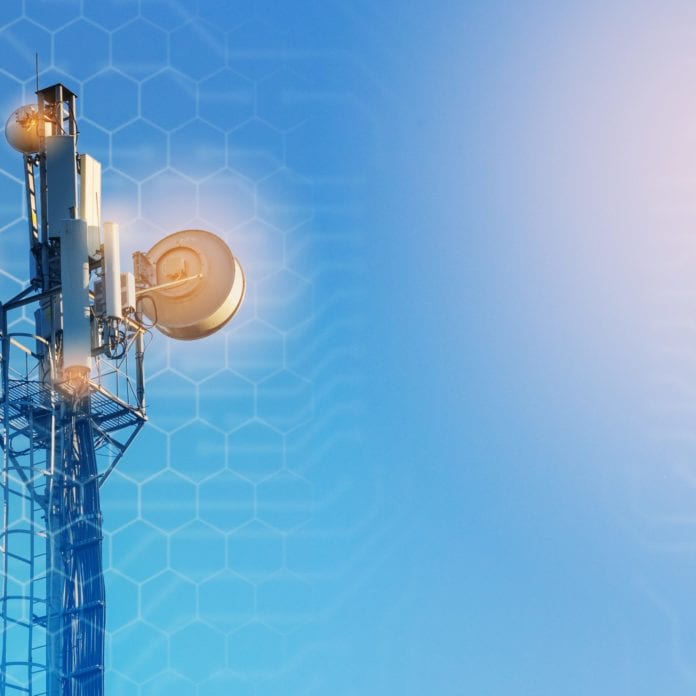4G and 5G will coexist for much longer than previous generations of mobile broadband
PROVIDENCE, Rhode Island—For Peter Linder, Ericsson’s vice president of marketing and communications in North America, the most important thing for policy makers and businesses to understand about the next generation of mobile broadband is that 5G is not a single thing. “Instead, it actually provides carriers a lot of options,” Linder explained before leading a seminar about bringing next-generation connectivity to rural America at this year’s CCA Convention.
According to Linder, a lot of this flexibility will come from the fact that 4G and 5G will coexist for much longer than previous generations of mobile broadband, and therefore, they can provide parallel coverage. “5G uses different spectrum,” he elaborated. “4G is provided from large towers, which have a certain reach, about how much you or I could walk in a day. 5G adds low-band signals that go a lot further, 50-60 miles. High-band signals only goes half a mile, but are very, very fast.”
Linder stated that the best solution for a carrier might be a combination of those bands, especially because users can move from, say a high-band signal when they’re in close range, to a mid- or low-band signal as they move away from the tower without even noticing the shift in signal.
“This is called carrier aggregation. You can take a part of high-band spectrum and combine it with mid- or low-band spectrum, combining the capacity power,” said Linder, “and this can be hidden from the user.”
G.S. Sickand, Ericsson’s VP and chief technology officer for Regional Carriers, reiterated the longevity of 4G in his keynote address, commenting that it will stick around for “at least a decade if not more.”
“4G and 5G will coexist for quite some time,” said Sickand. “You will have a technology as long as it serves its purpose. There’s a big different between how 2G and 3G related and how 3G and 4G related. Because they have common infrastructure, 4G and 5G are much more similar than 3G and 4G were.”
Dynamic spectrum sharing will also add another layer of coverage flexibility for operators. “When 1G was introduced, there was 1G spectrum dedicated to that,” said Linder. “Same thing with 2G and 3G. Whenever we introduced something new, we filled up the spectrum. With 5G, however, we can introduce 4G and 5G in the same band and dynamically share them, combining the two.”
Sickand offered his own perspective on dynamic spectrum sharing, as well. “On the same radio, on the same carrier, an operator can support 4G and 5G devices at the same time,” he said. “And the allocation is dependent on the number of devices from each on the network.”
And a critical point for operators to understand is that it is not necessary to take away from 4G to give to 5G. “They share those resources,” explained Sickand.
He did add, however, that now that standalone (SA) 5G is beginning to take shape, operators may have to start thinking about how to evolve their core.
“You have to understand that when we came out saying we were going to build 5G in this timeline, that timeline was pulled in by two years,” said Linder. “Because of that, the first version of 5G used non-standalone (NSA) architecture, which requires support of a 4G core network. It talks to a 5G network through a 4G network. Only the radio parts need to be updated.”
Doing it this way allowed cellular technologies companies to develop 5G technology quicker, but resulted in a less streamlined system. Standalone 5G is will be more efficient than the NSA version, leading to lower costs for operators and better performance for users, and would also eliminate the issue of “upswitching” latency, which occurs when a device first switches from LTE to 5G because the SA version would not require the support of a 4G LTE network to perform certain functions.
“The SA architecture,” Linder continued, “has implications on the core, radio and devices. SA radios are not connected to 4G but go straight to the core and that core has to be updated to a 5G core. The 5G core won’t function that differently, but the operation will be different. There will be software updates, it will also open up the possibility of third-party interfaces, allowing us to accelerate the advances of the mobile broadband ecosystem.”
Earlier this week, Ericsson and Korean mobile operator SK Telecom completed testing of an end-to-end 5G transmission using handsets, radio equipment and a 5G core.

